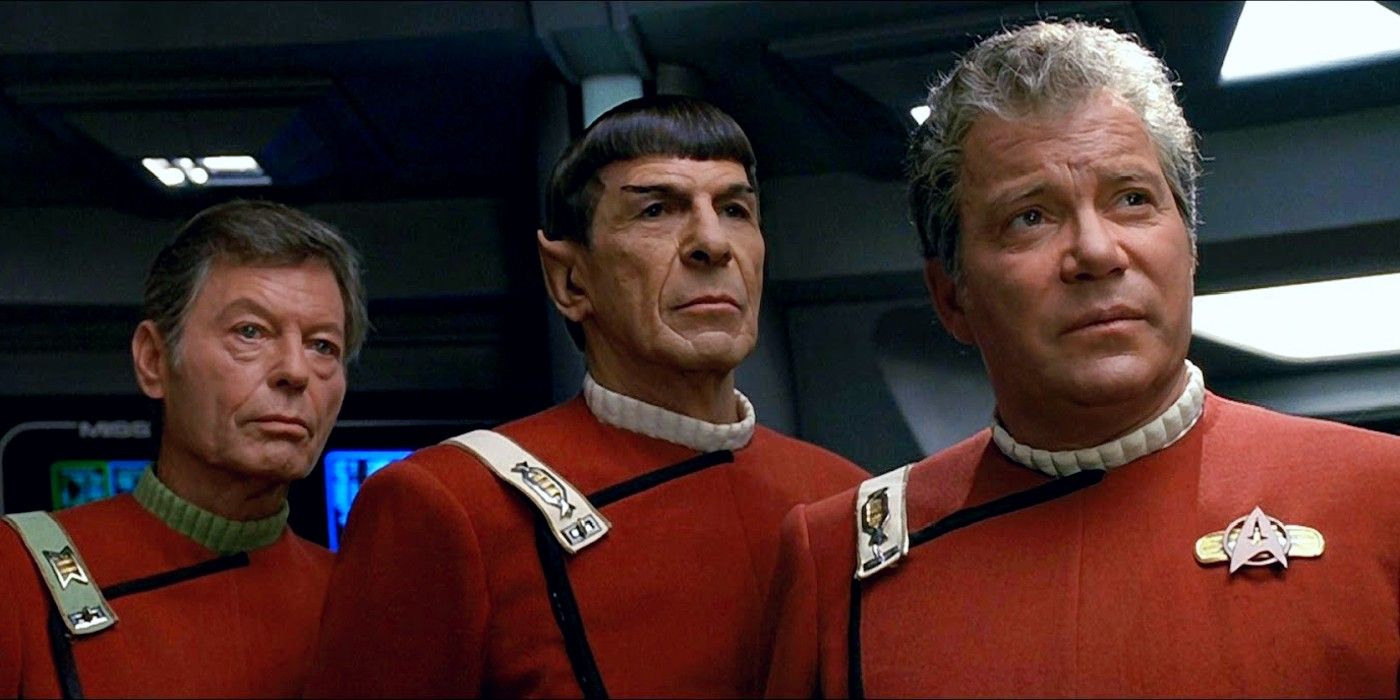WARNING: The following contains spoilers for Star Trek: Discovery Season 4, Episode 7, "... But to Connect," streaming now on Paramount+.
When the USS Discovery first arrived in the 32nd century, it learned that over the past several centuries Starfleet and the United Federation of Planets had completely imploded after a cataclysmic event known as the Burn. After the Discovery identified the cause of the Burn and found enormous deposits of usable dilithium crystals, Starfleet and the Federation began to steadily rebuild as its armada became capable of warp speeds once again, but the organization faces a major moral crisis that calls its ideals into question. And in defending its virtuous identity in the 32nd century, the Federation cites an ancient treaty from the Star Trek: The Original Series era to maintain sight of its uncompromisable stance.
Throughout Star Trek: Discovery Season 4, the galaxy has been menaced by a dark matter anomaly, moving erratically across the cosmos, consuming all matter in its path. Analyzing data gathered from the anomaly, the Discovery learned that the destructive force was created by an unknown entity outside of the galaxy. In the face of this development, along with the point of origin of the anomaly's creator, the Federation convenes for a high-stakes meeting to determine their next course of action before more lives are lost to the anomaly. And as a suggestion to use illegal weapons to obliterate the anomaly begins to gain support amongst the delegates, Captain Michael Burnham evokes the Khitomer Accords to bring the assembly to follow a more measured response instead.
The first Khitomer Accords were ratified between the Federation and Klingon Empire in 2293 following the sudden destruction of the Klingon moon Praxis in Star Trek VI: The Undiscovered Country. With Praxis' destruction eliminating the ozone layer of Kronos, the Klingon home world, the Klingons successfully petitioned the Federation for an armistice, ceding contested territory and leading to a fragile alliance between the two longtime warring civilizations. Some time later, a second set of Khitomer Accords were ratified outlawing the use of isolytic weaponry due to the permanent damage these armaments inflicted on subspace as revealed in Star Trek: Insurrection.
While technology developed by Risan scientist Ruon Tarka is theoretically capable of neutralizing the anomaly, Burnham learns that the device is based off of isolytic weaponry. Not only concerned of the lasting damage to an entire sector and the message that using isolytic weapons would send to the unknown creator of the anomaly, Burnham feels that use of such a device flies in the face of what the Federation stands for. Reminding the assembly of the Federation's principles and the legacy of the Khitomer Accords, Burnham delivers an impassioned address appealing to the delegates' ideals, which leads to Tarka's suggestion being voted down.
Centuries after the Khitomer Accords were ratified, the treaties are still a cornerstone in Federation policy that remains intact even after the galaxy endured the horrific effects of the Burn. Not only just a piece of Starfleet history, the Khitomer Accords are still revered and relevant, with Burnham using them to prevent the Federation from proceeding recklessly. And as the Federation continues to rebuild and train the next generation of Starfleet, it maintains sight of the ideals that has made the organization so effective and aspirational for years, even in the face of such a destructive threat.
To see how Burnham uses a policy from the TOS era to great effect, the first seven episodes of Star Trek: Discovery Season 4 are available now on Paramount+.


